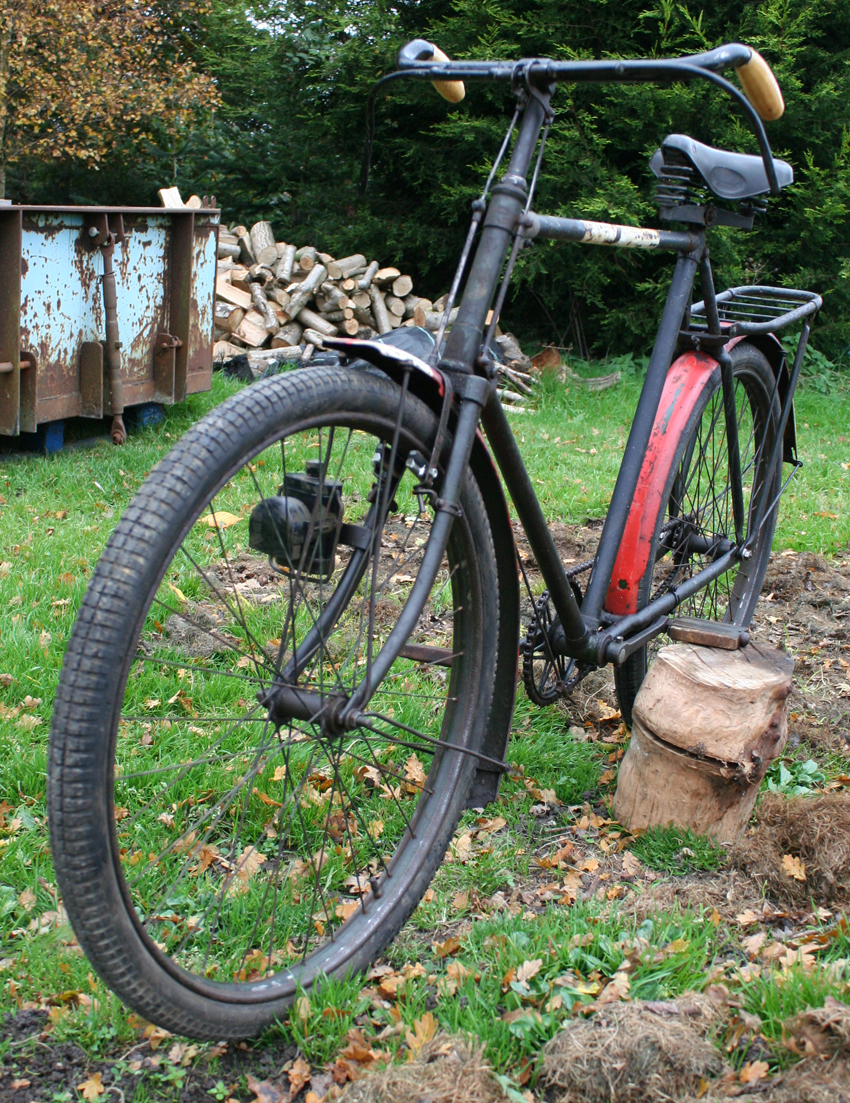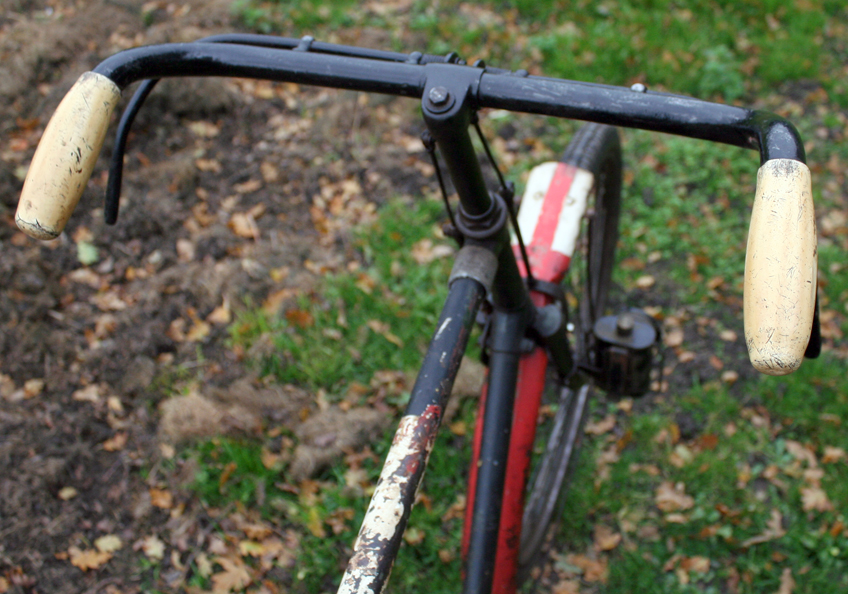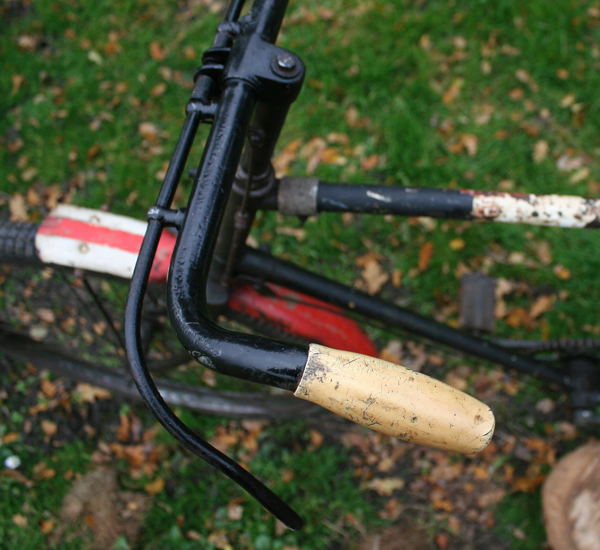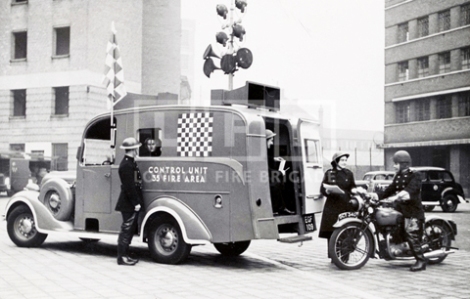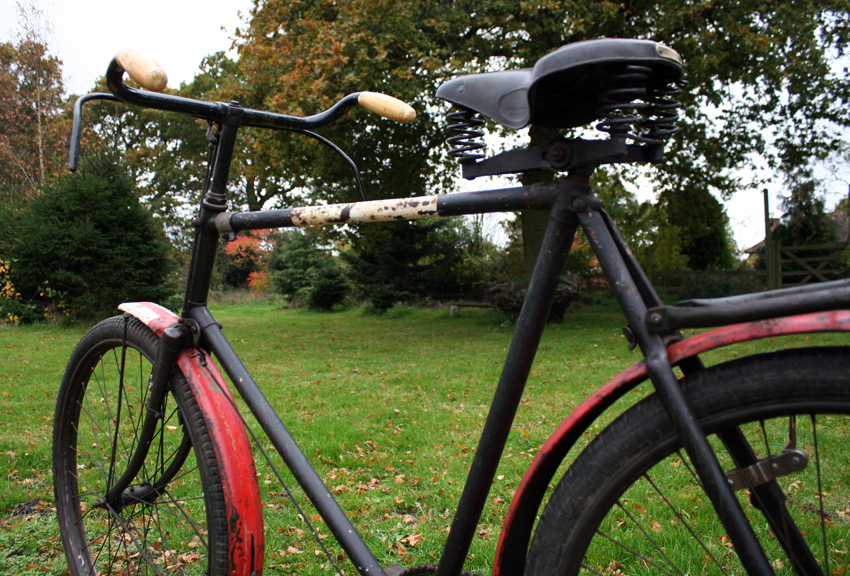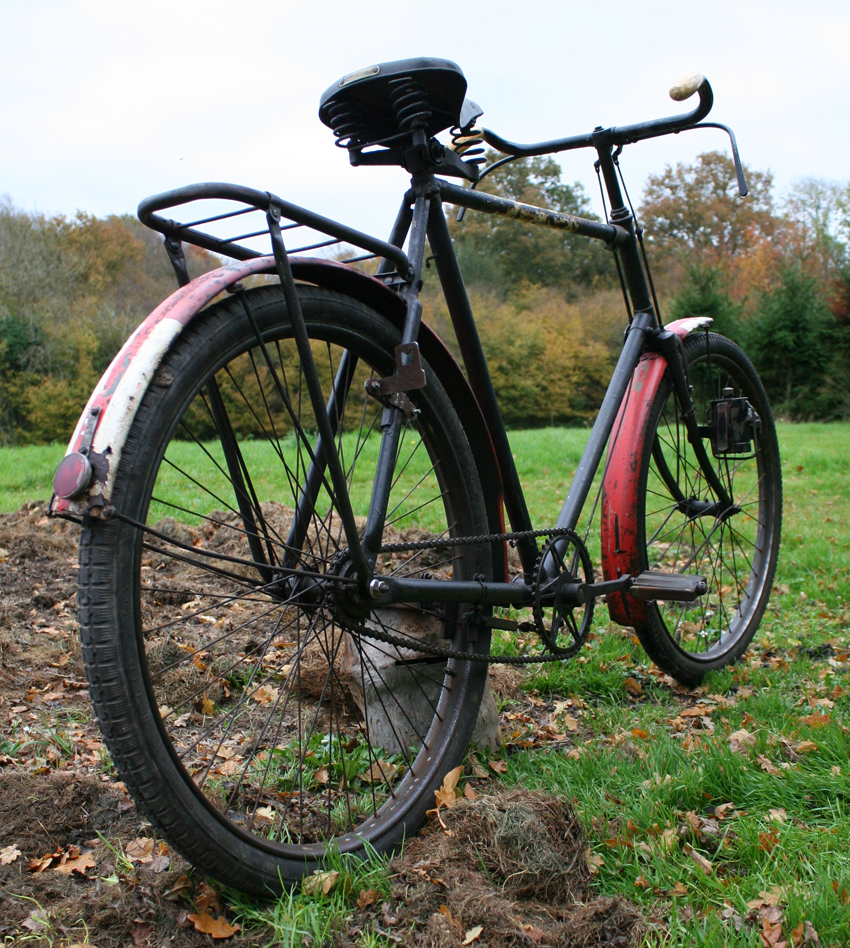1947 Mercury Fire Service Roadster
1947 Mercury Fire Service Roadster
Officially described as: ‘Bicycle, Trade Pattern, Heavy Duty’
Series 6/VEH/17245
26″ Wheels
I’ve never seen another Fire Service bicycle. Have you?
The red mudguards are very distinctive: there’s no mistaking their purpose.
An interesting item is the number stamping fixed to the crossbar (below). This bike is part of a consignment that came from an ex-military auction in Somerset the 1970s. You can see another two (a Mercury and a Phillips) on this website.
The Mercury crest on the headstock is very faded.
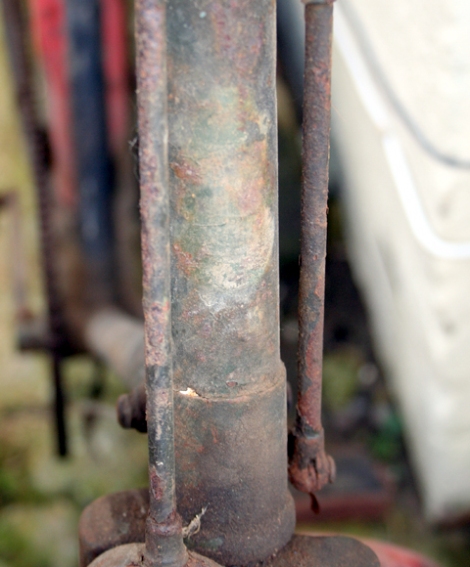
BEFORE RESTORATION
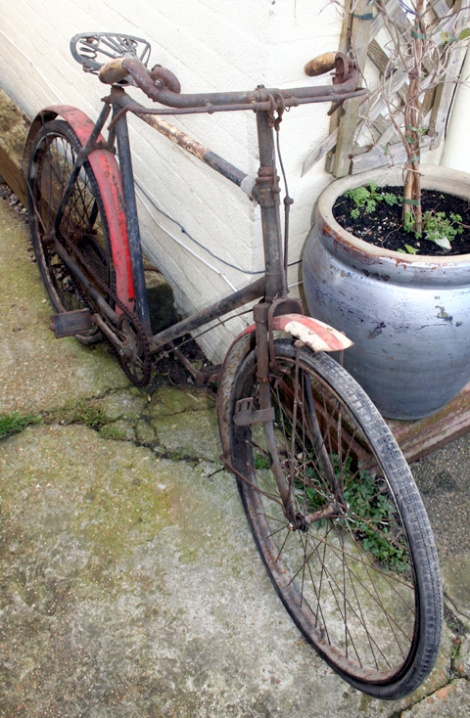
This Fire Service Mercury was one of a pair. Unfortunately the other (below) had a broken frame and both needed a lot of restoration work. Fire Brigade bikes are extremely rare items, so we persevered.
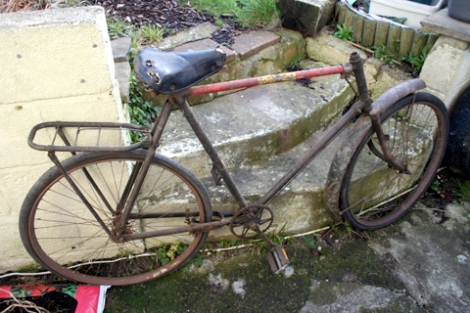
But, in the end, I had to scrap the broken AFS bicycle as the frame was too bad to repair. I used a military Mercury for parts, and the left-over parts will be built up by my friend Tony into another Mercury. Nothing goes to waste around here 🙂
After some serious restoration work, the AFS Mercury is now back on the road.
I’ve tried researching this bicycle. My initial point of reference was the London Fire Brigade Museum, but they weren’t able to turn up photos of bicycles used by the AFS/NFS/London Fire Brigade.
THE AUXILIARY FIRE SERVICE
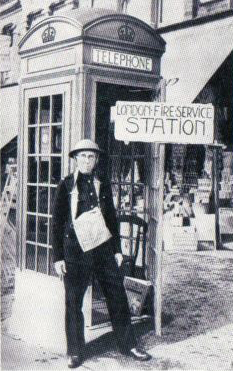
The Auxiliary Fire Service (AFS) was first formed in 1938 in Great Britain as part of Civil Defence Air raid precautions. Its role was to supplement the work of brigades at local level. In this job it was hampered severely by incompatibility of equipment used by these different brigades – most importantly the lack of a standard size of hydrant valve. The Auxiliary Fire Service and the local brigades were superseded in August 1941 by the National Fire Service.
 GROSE CYCLE SHOP, New Bridge St, bombed in December, 1940
GROSE CYCLE SHOP, New Bridge St, bombed in December, 1940
Members of the AFS were unpaid part-time volunteers, but could be called up for whole-time paid service if necessary. This was very similar to the wartime establishment of the police Special Constabulary. Men and women could join, the latter mainly in an administrative role.
 The BBC, bombed in January, 1941
The BBC, bombed in January, 1941
An AFS was formed in every county borough, borough and urban district, and there was also one in the London County Council area. Each AFS was commanded by a Commandant, with Deputy and/or Assistant Commandants in the larger services. The services operated their own fire stations, each commanded by a Section Officer, and station areas were divided into Fire Beats, each under the command of a Patrol Officer. Services with five or more stations divided them into Divisions, each under the command of a Divisional Officer. These ranks were not laid down by the government, and some services used different systems
The Auxiliary Fire Service was reformed in 1948 alongside the Civil Defence Corps. It was equipped with 1,000 Green Goddess (Bedford RLHZ Self Propelled Pump) fire engines. It was disbanded in 1968.
 Bridge built over Bank Tube Station, after Direct Hit in January 1941
Bridge built over Bank Tube Station, after Direct Hit in January 1941
During peacetime, AFS crews frequently attended fires and accidents alongside their regular colleagues. They provided significant assistance at some of the worst fires, such as that at Billingsgate Market and at Barking wood yard. AFS personnel were trained in firefighting by their own officers and with assistance from full-time fire officers. Many were trained to the St John Ambulance Higher First Aider Certificate standard – often proving invaluable at major incidents involving injury.
The AFS has never had any connection whatever with any of the British Armed Forces. It is a pure coincidence that the Government used Army personnel to man and operate fire appliances during the Firemen’s strikes. The appliances used were former AFS equipment brought out of mothball for the purpose. Many have since been sold at public auction.
The Auxiliary Fire Service is still active as part of Civil Defence in the Republic of Ireland.
[http://en.wikipedia.org/wiki/Auxiliary_Fire_Service ]
London Fire Brigade has some photos of AFS vehicles for sale on their website: http://www.lfbphotos.com/assetbank-lfb/action/browseItems?categoryId=148&categoryTypeId=1&page=1&pageSize=15
Daily life in the War
Queues were common features of life in wartime Britain. There were constant shortages, and those at the back of the queues sometimes found they had waited in vain. Clothes were rationed. Set numbers of coupons were issued to everyone, and different clothes “cost” different numbers of coupons. Of course, they had to be paid for as well. The Utility scheme produced cheap, simple fashions. In fact, there were Utility designs of furniture and other household goods as well. These helped newly-married couples or bombed-out families set up home cheaply.
Nothing should be wasted. “One of the things dinned into us during the war was that we must not waste hot water. The water in our bath must not be more than three inches deep.” Scrap metal was sent for salvage, to be recycled into munitions. Scrap food went to feed pigs, which then became food themselves.
Travel was restricted. Petrol rationing was very rigid, and motoring for pleasure was forbidden. Railway journeys were often slow and disrupted by air raids or by military trains which took priority. Blacked-out and overcrowded trains were uncomfortable, and passengers were asked to consider “Is your journey really necessary?”
The bicycle was often the best way of getting about.
[http://www.guildford.gov.uk/GuildfordWeb/Leisure/GuildfordMuseum/ExhibitionsEvents/HomeFront.htm]





